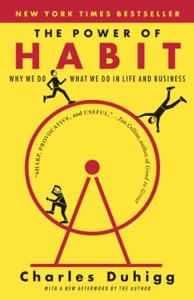
Want to learn the ideas in The Power of Habit better than ever? Read the world’s #1 book summary of The Power of Habit by Charles Duhigg here.
Read a brief 1-Page Summary or watch video summaries curated by our expert team. Note: this book guide is not affiliated with or endorsed by the publisher or author, and we always encourage you to purchase and read the full book.
Video Summaries of The Power of Habit
We’ve scoured the Internet for the very best videos on The Power of Habit, from high-quality videos summaries to interviews or commentary by Charles Duhigg.
1-Page Summary of The Power of Habit
Overview
In this article, you learned about keystone habits and how they can influence your life. One example of a keystone habit is to make your bed every morning. Doing that can help you be more productive in the rest of your day, as well as improve other parts of your life. You’ve decided to quit smoking or junk food for good, but after a few weeks it becomes too much and you fall back into old habits.
When you hear the word ‘habit’, what comes to mind? If it’s something negative, then you’re not alone. Many people think of bad habits that they’d like to change or get rid of. However, there are positive habits as well such as exercising and practicing good hygiene. But where does this power come from? According to the author, it has a lot to do with our brains and how we interact with our environment on a daily basis. Habits can be both helpful and harmful depending on your perspective; however, everyone has them in some form or another because they make life easier for us by allowing us to perform tasks without having to think about them consciously all the time.
Luckily, you can learn how habits work and overcome their power. Let’s look at the reasons why anticipation leads to habit formation; what resisting marshmallows can tell us about habits; and what the LATTE method is.
Big Idea #1: Habits are simple, repetitive loops that save effort.
Researchers at MIT were studying mice to learn more about how habits are formed in the brain. They placed a piece of chocolate for the mice to find at the end of a T-shaped maze, and could monitor their brain activity as they sniffed their way to it.
When the mice were first put in the maze, their brain activity spiked. They could smell chocolate and began searching for it. However, when they learned where to find the chocolate by repeating the experiment many times and memorizing a path through that maze, their brain activity decreased.
The process of turning a sequence of actions into an automatic routine is called chunking. It’s the basis for all habit formation, and it allows us to save energy and perform common tasks efficiently.
Hence, even a complicated task that requires concentration initially becomes effortless with practice. In fact, according to a 2006 study by Duke University, as many as 40 percent of the actions we perform each day are based on habits. Any habit can be broken down into three parts: First, you sense an external cue (your alarm clock ringing), which creates a spike in your brain activity as it decides what action is appropriate for the situation.
After the cue, comes the routine. People are familiar with this activity; they do it every day and it’s easy for them to do so. They have a reward afterwards: their mouth feels clean and fresh after brushing their teeth.
Habits are extremely difficult to change. Even when people suffer brain damage, they still follow their old habits. For example, Eugene had extensive brain damage from encephalitis and was unable to point out the kitchen door in his living room; however, he could remember where all of his food was stored in the cabinets.
Habits are formed in the basal ganglia, which is a small part of your brain. This means that even if you’re able to successfully kick a bad habit like smoking, it’s always possible to relapse.
Big Idea #2: When habits are created, they become easy to follow and people get addicted.
Imagine that you’ve been eating chocolate-chip cookies every afternoon for the past year. You do this as a reward for working hard during the day.
Some of your friends have pointed out that you’ve been gaining weight. So, you decide to stop eating sweets for a while. However, when you’re walking past the cafeteria and see all those cookies in the display case, it’s hard not to get upset and eat one or two.






